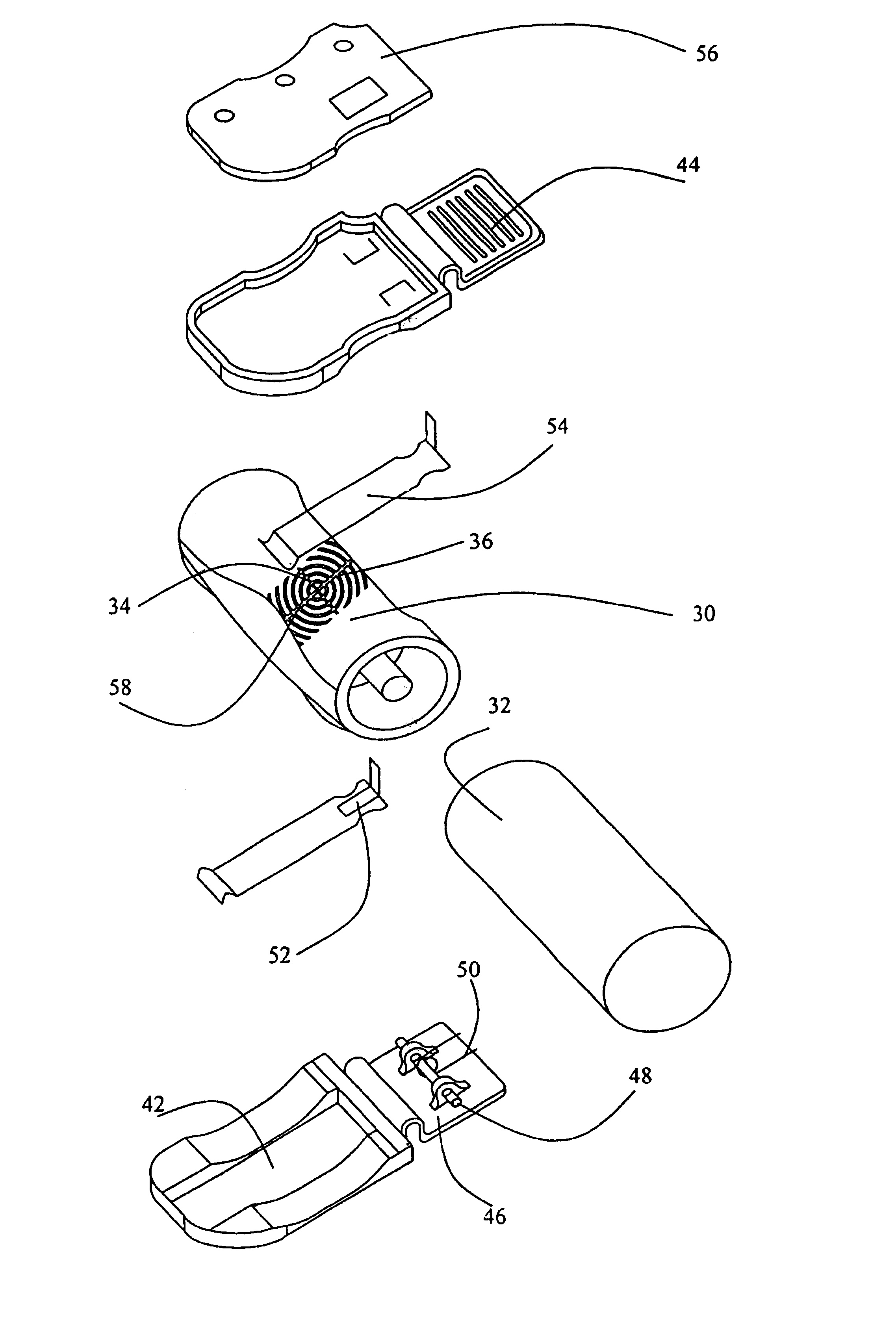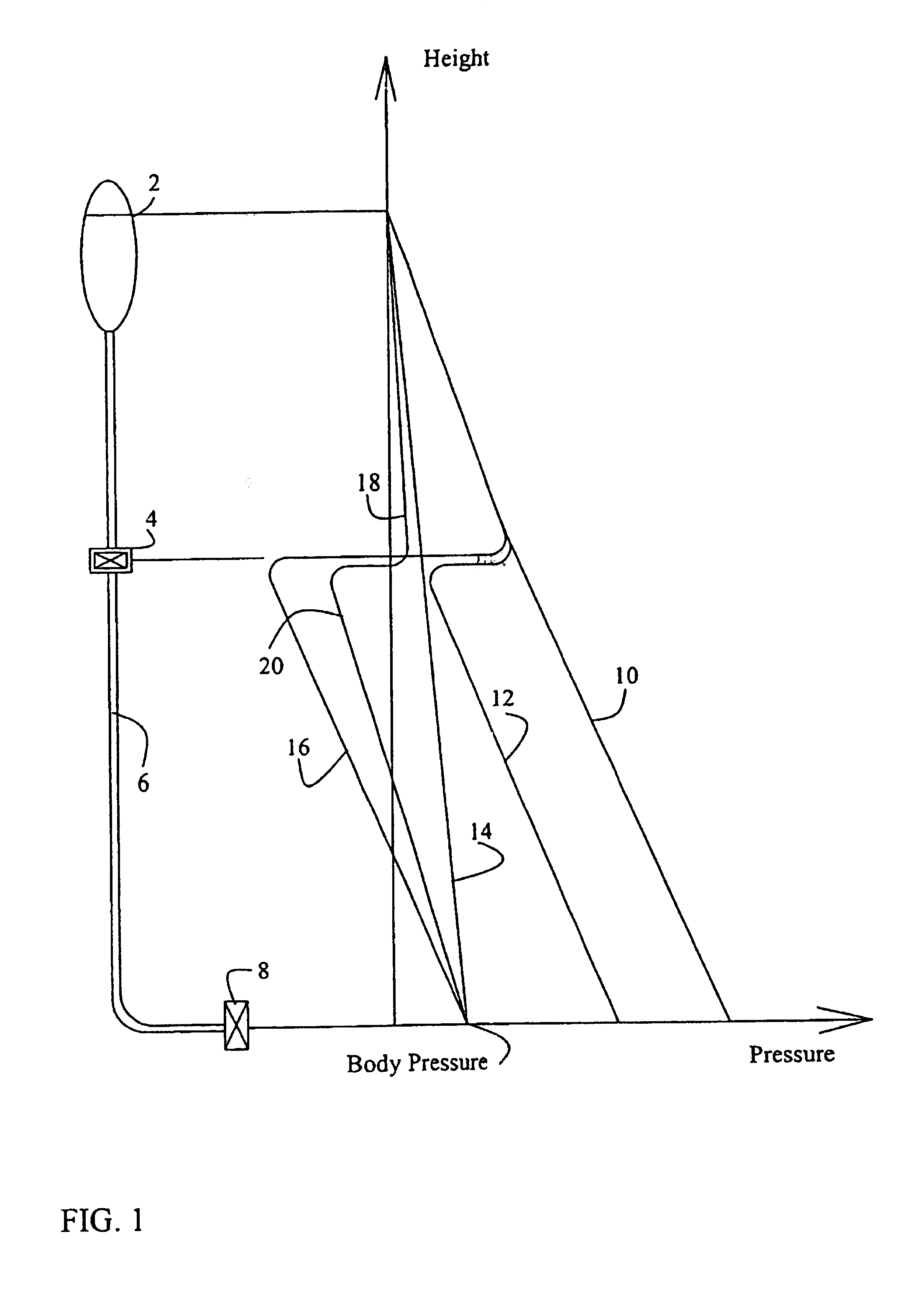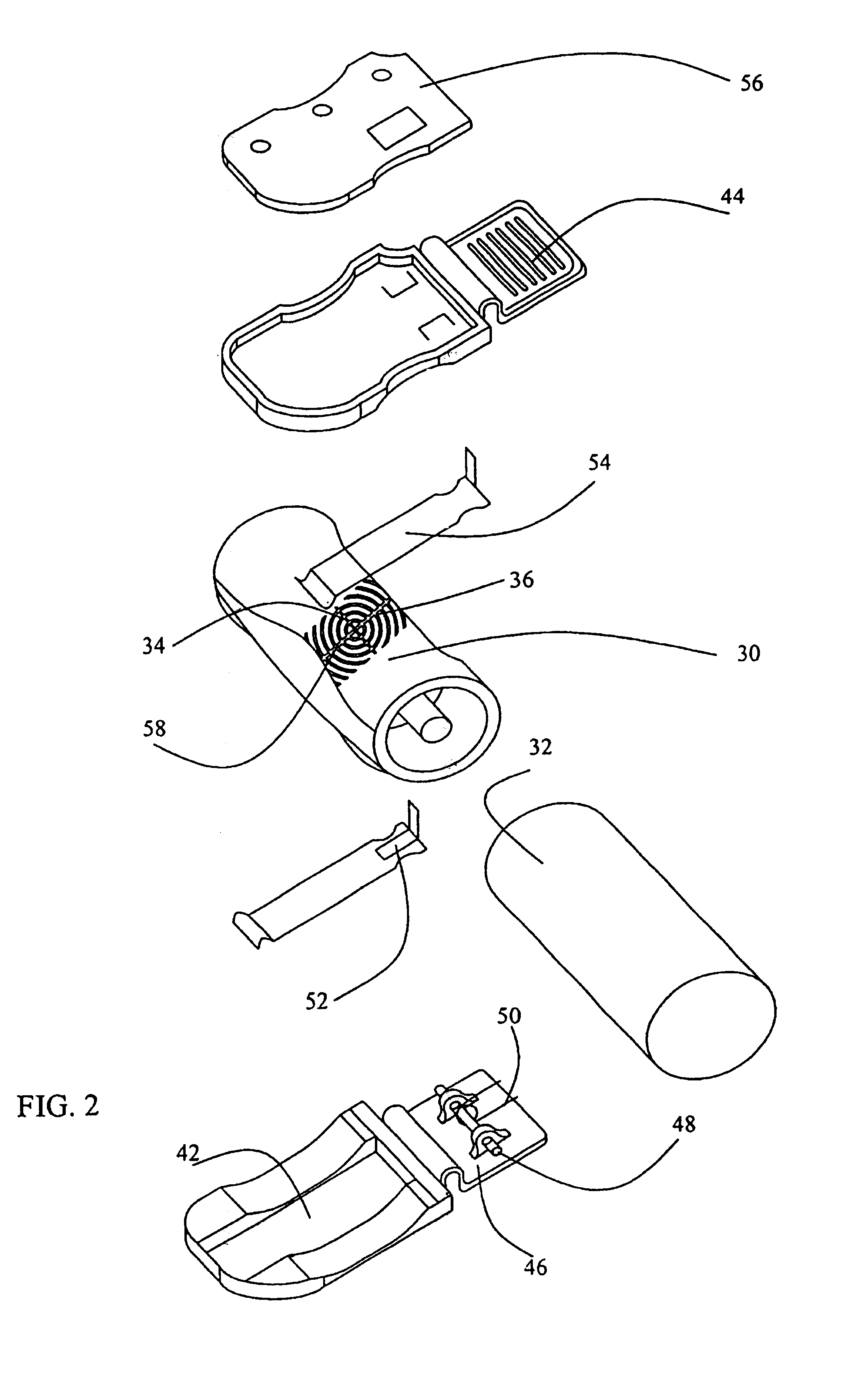Method and device for detecting malfunction in a gravity fed intravenous delivery system
a gravity-fed intravenous and malfunction detection technology, applied in the direction of intravenous devices, flow control, non-electric variable control, etc., can solve the problems of intravenous fluid administration malfunction, tip thereby becoming lodged in surrounding tissue, discoloration, discomfort and tissue destruction
- Summary
- Abstract
- Description
- Claims
- Application Information
AI Technical Summary
Benefits of technology
Problems solved by technology
Method used
Image
Examples
Embodiment Construction
[0041]The present invention is a method and device for detecting malfunction in a gravity fed intravenous delivery system.
[0042]The principles and operation of methods and devices according to the present invention may be better understood with reference to the drawings and the accompanying description.
[0043]By way of introduction, it will be useful to describe the underlying principles of the present invention. The present invention uses principles relating to pressures in columns of fluid, specifically columns inside conduits or tubes. A column of fluid in a tube that is closed at the bottom and open at the top will have pressures that are equal to atmospheric pressure at the top of the column and increase toward the bottom in proportion to the increased weight of the fluid above. A column in a tube with an open bottom and a closed top will be held in place in the tube by the atmospheric pressure exerted on the bottom of the column. The highest pressure is the atmospheric pressure...
PUM
 Login to View More
Login to View More Abstract
Description
Claims
Application Information
 Login to View More
Login to View More - R&D
- Intellectual Property
- Life Sciences
- Materials
- Tech Scout
- Unparalleled Data Quality
- Higher Quality Content
- 60% Fewer Hallucinations
Browse by: Latest US Patents, China's latest patents, Technical Efficacy Thesaurus, Application Domain, Technology Topic, Popular Technical Reports.
© 2025 PatSnap. All rights reserved.Legal|Privacy policy|Modern Slavery Act Transparency Statement|Sitemap|About US| Contact US: help@patsnap.com



